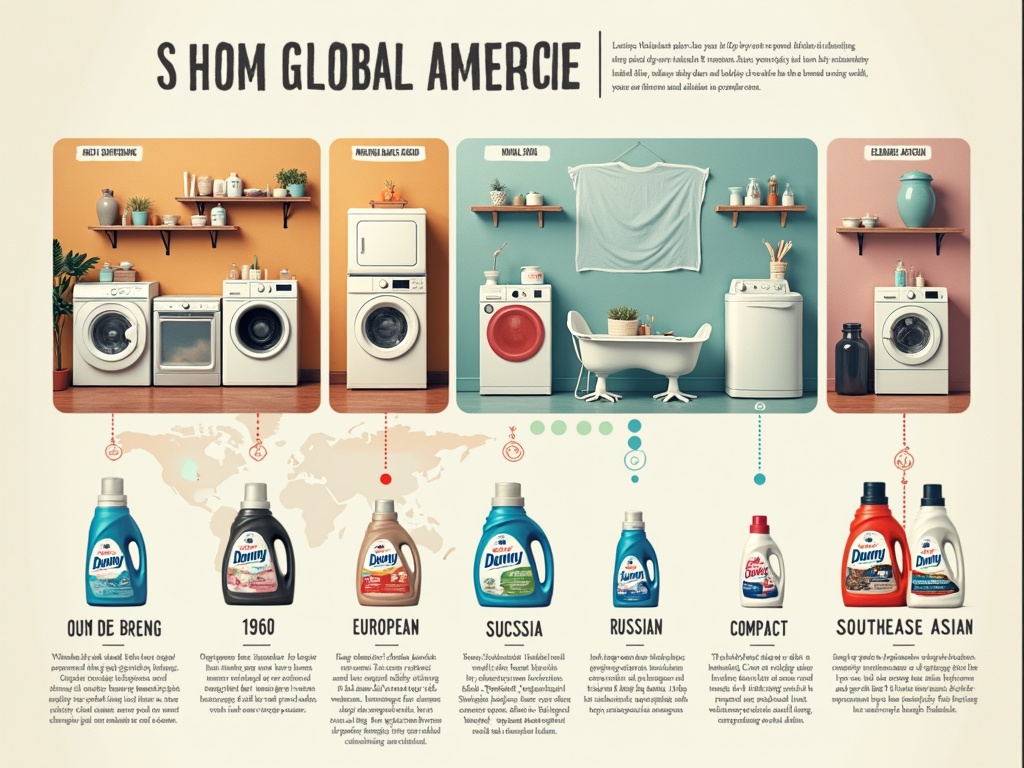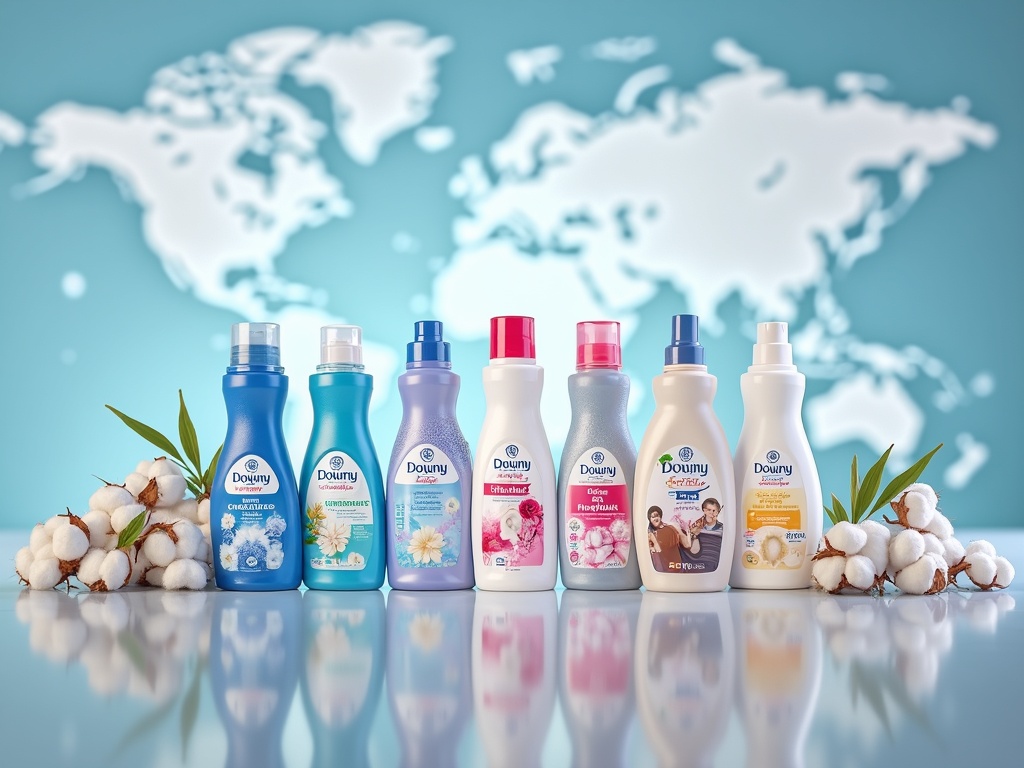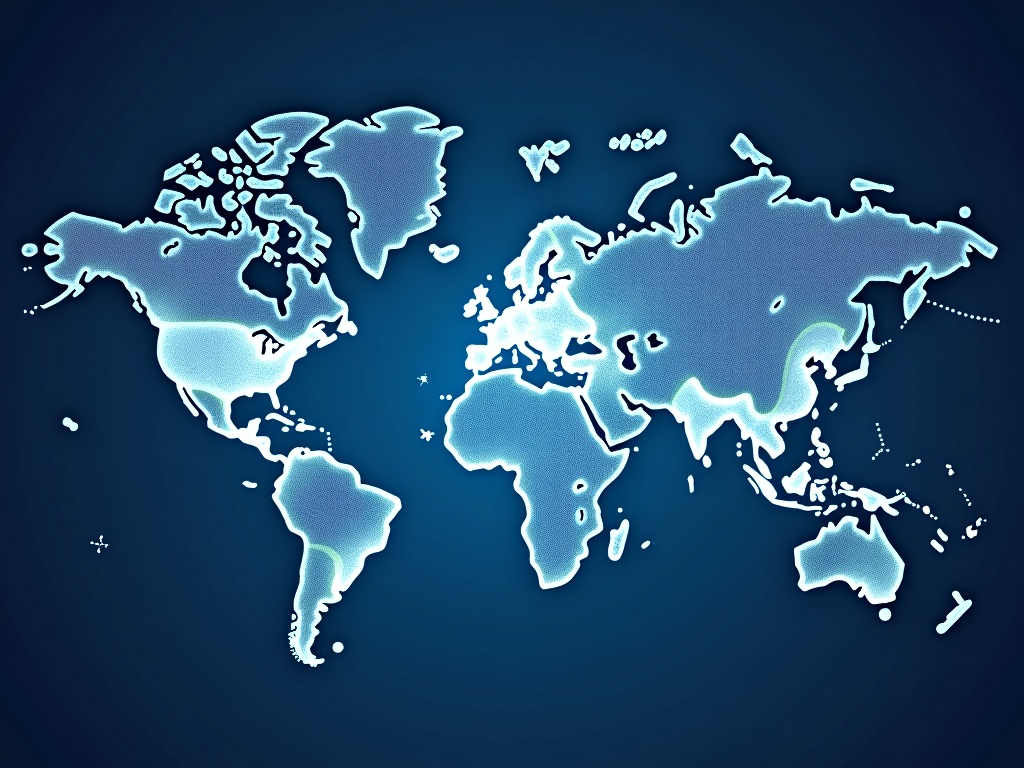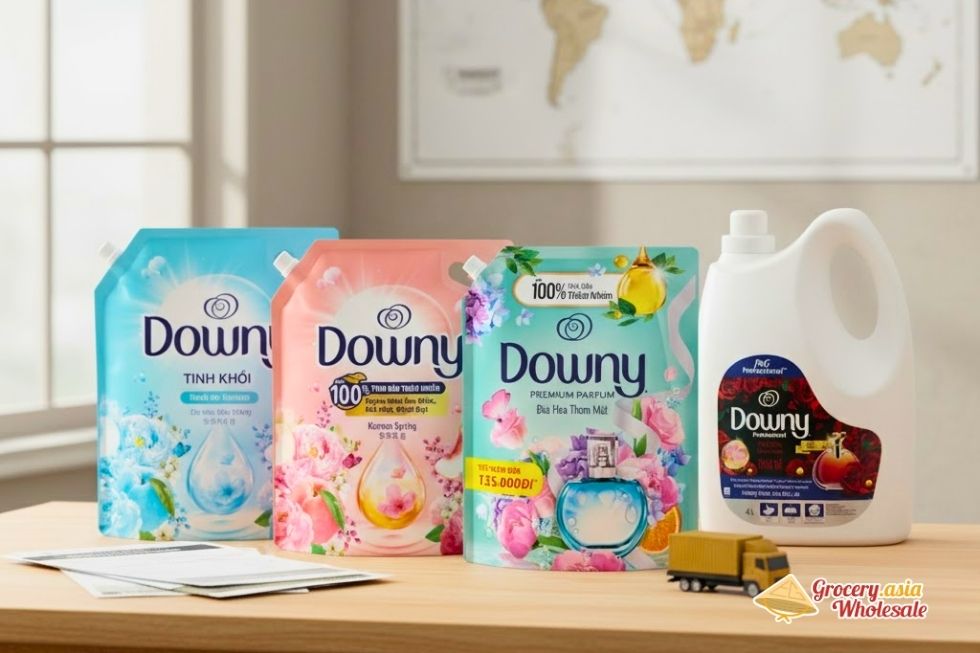No products in the cart.
Downy Fabric Softener, Fabric Conditioner, Home Care
Who Makes Downy Fabric Softener And Distributes It
Procter & Gamble (P&G), a global consumer goods powerhouse, manufactures and distributes the popular Downy fabric softener through its highly successful Fabric & Home Care division, which reported an impressive $27.6 billion in net sales during fiscal year 2023.
Table of Contents
Key Takeaways
- Procter & Gamble owns and manufactures Downy – P&G oversees the complete production cycle, from formulation to final distribution, through its Fabric & Home Care division, which stands as the company’s largest business segment.
- Global manufacturing network ensures worldwide availability – Operating more than 100 production facilities in around 70 countries, P&G is able to localize manufacturing, thereby reducing costs and tailoring products to regional preferences.
- Downy launched in 1960 and expanded rapidly – Within just 16 months of its debut, Downy achieved nationwide distribution throughout the U.S. It later branched out globally, marketed under alternate names such as Lenor in Europe and Asia.
- Diverse product portfolio targets specific consumer needs – The Downy lineup includes a variety of formulations such as Ultra Downy, Infusions, WrinkleGuard, Unstopables, Nature Blends, and Free & Gentle to meet varied consumer preferences and sensitivities.
- P&G maintains dominant market position – With over 50% market share in the U.S. fabric care segment, P&G continues to outperform competitors like Snuggle and Suavitel by leveraging its superior research and development, marketing strategies, and global distribution capabilities.
If you’d like to explore more about Downy and P&G, visit the official Procter & Gamble website.
Procter & Gamble: The Global Force Behind Downy
I can trace Downy’s manufacturing roots directly to Procter & Gamble (P&G), the American multinational corporation that’s been shaping household products since 1837. This Cincinnati, Ohio-based giant stands as one of the world’s largest consumer packaged goods companies, and Downy’s legacy represents just one jewel in their extensive product crown.
P&G’s Fabric & Home Care Powerhouse
Within P&G’s diverse portfolio, Downy falls under the Fabric & Home Care division, which happens to be the company’s largest business segment. This division generated an impressive $27.6 billion in net sales during fiscal year 2023, demonstrating the substantial market demand for quality fabric care products.
The division houses several household names that you’ve likely encountered in your laundry routine:
- Tide – the leading laundry detergent brand
- Ariel – popular in international markets
- Gain – known for its distinctive fragrances
- Bounce – dryer sheets and fabric softeners
- Febreze – odor elimination products
This strategic grouping allows P&G to offer comprehensive fabric care solutions while leveraging shared research, development, and distribution resources across brands.
Global Manufacturing Network
P&G’s manufacturing capabilities span an impressive network of over 100 production facilities across approximately 70 countries. This extensive infrastructure enables the company to produce Downy closer to consumers, reducing shipping costs and delivery times while adapting formulations to meet regional preferences and regulations.
Manufacturing locations vary by region, but each facility maintains P&G’s stringent quality standards. The company’s decentralized production approach means that Downy fabric conditioner sold in Asia might be produced in local facilities, while North American consumers receive products from regional plants.
P&G’s commitment to innovation drives continuous improvements in Downy’s formulation. The company invests heavily in research and development, ensuring that fabric softener ingredients meet evolving consumer expectations for both performance and safety. This scientific approach has helped establish Downy as a trusted choice among consumers seeking reliable fabric care solutions.
The scale of P&G’s operations provides significant advantages in raw material procurement, manufacturing efficiency, and distribution reach. These efficiencies allow the company to maintain competitive pricing while investing in product innovation and quality improvements that benefit end consumers.

From Invention to Global Brand: Downy’s Market Journey
I first noticed Downy’s remarkable transformation from a simple fabric treatment to a global household staple when I studied its August 1960 launch in the United States. The brand emerged during a critical period when synthetic detergents were changing how Americans approached laundry care, creating an opportunity for a product that could soften fabrics, reduce static, and improve the overall feel of freshly washed clothes.
The speed of Downy’s expansion impressed me most. Within just 16 months, by December 1961, the product had rolled out nationwide after consumers embraced its benefits enthusiastically. This rapid growth demonstrated that Downy fabric conditioner addressed a genuine need in American households struggling with harsh synthetic detergents.
Strategic International Expansion
P&G’s global strategy fascinates me because they didn’t simply export the American formula worldwide. Instead, they adapted the brand for different markets, marketing it as Lenor across Europe, Russia, Japan, and various parts of Asia. This strategic decision allowed the company to customize scent profiles and formulas according to regional wash habits and machine types.
The engineering behind Downy’s legacy stems from targeted research and development that focused specifically on rinse-cycle innovation. Early P&G scientists understood that effective fabric conditioning required precise timing and chemical composition to work during the final wash phase. This technical foundation enabled the product to perform consistently across different washing machine designs and water conditions.
What strikes me about Downy’s journey is how P&G balanced global consistency with local adaptation. While maintaining the core softening technology that made the brand successful, they recognized that European washing machines operate differently than American models, and Asian consumers prefer distinct fragrance profiles compared to their Western counterparts.
The brand’s evolution from a single American product to a worldwide phenomenon reflects P&G’s understanding of both technical requirements and cultural preferences. Downy’s global production network now supports this international presence, ensuring that local manufacturing can meet regional demands while maintaining quality standards.
This expansion strategy proved particularly effective because it allowed Downy to compete with established local brands while offering the innovation advantages that came from P&G’s extensive research capabilities. The combination of proven technology and regional customization created a winning formula that continues to drive market success across diverse international markets.

Downy’s Diverse Product Portfolio
P&G has developed multiple Downy sub-brands that address specific consumer needs and preferences. This strategic approach allows the company to capture different market segments while maintaining Downy’s established legacy in fabric care.
Specialized Formulations for Every Household
The product lineup demonstrates P&G’s commitment to innovation and consumer choice. Here’s how each sub-brand serves distinct purposes:
- Ultra Downy/Downy Premium delivers the standard liquid conditioner experience, focusing on essential softness and freshness that consumers expect from quality fabric softeners.
- Downy Infusions elevates the sensory experience with perfume-inspired scents that transform laundry day into a luxury experience.
- Downy WrinkleGuard tackles a specific pain point by helping prevent wrinkles while maintaining fabric smoothness, reducing ironing time.
- Downy Unstopables introduces scent booster beads that consumers add directly into the wash for long-lasting fragrance.
- Downy Nature Blends caters to environmentally conscious consumers with plant-based formulas that don’t compromise on performance.
- Downy Free & Gentle addresses sensitive skin concerns with hypoallergenic, dye-free, and perfume-free formulations.
This diversification strategy reflects P&G’s deep understanding of consumer behavior and market trends. I’ve observed that the company continuously adapts its product offerings based on emerging consumer needs, whether that’s sustainability concerns, skin sensitivities, or premium fragrance experiences.
The breadth of options also demonstrates how P&G leverages its manufacturing expertise across global production facilities to create specialized formulations. Each product maintains the core Downy promise while addressing specific consumer segments, from budget-conscious families to premium-seeking households.
P&G’s approach to product development ensures that ingredient safety remains consistent across all variants while allowing for customization in scent profiles, active ingredients, and delivery methods. This comprehensive portfolio positioning helps Downy maintain its market leadership position while competing effectively against both established brands and emerging competitors in the fabric care category.

The Competitive Landscape in Fabric Care
I’ve observed the fabric care market evolve into a fiercely competitive arena, where established brands battle for consumer loyalty and shelf space. The U.S. fabric softener segment particularly showcases this intensity, with several major players vying for market dominance.
Key Players and Market Dynamics
Three brands consistently emerge as the primary competitors in this space. Downy fabric softener leads the charge, while Snuggle from Henkel and Suavitel from Colgate-Palmolive represent formidable alternatives. Each brand brings distinct strategies and positioning to capture different consumer segments.
What strikes me most about this competitive landscape is P&G’s commanding position. The company maintains an estimated market share of over 50% in the U.S. fabric care category. This dominance isn’t accidental—it stems from decades of strategic investments and brand building that competitors struggle to match.
P&G’s scale advantage becomes evident when examining their capabilities. Their substantial size supports robust research and development programs that continuously innovate fabric care formulations. Advanced fragrance technology represents one area where this investment pays dividends, allowing Downy to deliver scent experiences that resonate with consumers long after laundry day ends.
I find P&G’s marketing prowess equally impressive. Their global reach enables sophisticated advertising campaigns that span multiple channels and demographics. This marketing muscle helps maintain Downy’s legacy while introducing new products to evolving consumer preferences. The company’s ability to coordinate worldwide campaigns creates brand recognition that smaller competitors can’t replicate cost-effectively.
Distribution strength provides another competitive moat. P&G’s deep retail partnerships ensure Downy products enjoy prominent placement across major chains. These relationships, built over decades, give the brand preferential treatment during promotional periods and new product launches. Retailers trust P&G’s brand management and supply chain reliability, making them willing partners in driving sales.
The competitive pressure pushes all players to innovate continuously.
- Henkel’s Snuggle brand focuses on emotional connections through mascot marketing and family-friendly messaging.
- Colgate-Palmolive positions Suavitel toward Hispanic consumers, recognizing demographic shifts and cultural preferences.
These targeted approaches challenge Downy to maintain relevance across diverse consumer segments.
Manufacturing scale plays a crucial role in this competition. P&G’s global production network, including facilities that produce Downy across multiple continents, creates cost advantages that benefit both the company and consumers. This global production capability allows P&G to respond quickly to regional demand fluctuations while maintaining consistent quality standards.
Innovation cycles in fabric care have accelerated as competitors seek differentiation. Safety considerations have become paramount, with all major brands investing in gentler formulations that protect both fabrics and sensitive skin. This focus on safety doesn’t compromise performance—modern fabric softeners deliver superior results while meeting stricter regulatory requirements.
Private label competition adds another layer of complexity. Retailers increasingly promote their own fabric care brands, often manufactured by contract companies. These products typically offer lower prices but lack the research backing and brand heritage of established names. P&G counters this threat by emphasizing Downy’s proven performance and emotional benefits that justify premium positioning.
The competitive landscape continues shifting as consumer preferences evolve:
- Sustainability concerns drive demand for eco-friendly formulations.
- Convenience factors like concentrated formulas gain traction.
Downy’s position as a category leader requires constant adaptation to these changing expectations while maintaining the core benefits consumers expect from fabric care products.
P&G’s response to competitive pressures demonstrates their commitment to maintaining market leadership. They invest heavily in understanding consumer behavior, developing products that address unmet needs, and creating marketing messages that resonate across different demographics. This comprehensive approach to competition explains why Downy continues thriving despite facing well-funded rivals with strong brand portfolios.
Who Makes Downy Fabric Softener? Direct Answer
Procter & Gamble manufactures Downy fabric softener. This multinational corporation owns the brand completely and handles every aspect of production, from initial development to final distribution.
P&G doesn’t just slap their name on someone else’s product – they control the entire process. The company manages product formulation, creates new scent profiles, oversees quality testing, designs packaging, and coordinates global distribution networks. This comprehensive approach ensures consistent product quality whether you’re buying Downy fabric softener in North America, Asia, or any other market where it’s available.
P&G’s Manufacturing Network
The company operates manufacturing facilities across multiple countries to serve different regional markets. Downy’s global production spans facilities in the United States, Mexico, and several other locations worldwide. Each facility follows P&G’s standardized protocols to maintain product consistency.
I find it impressive how P&G maintains quality control across such a vast network. The company employs strict testing procedures and ingredient sourcing standards at each location. This explains why Downy’s ingredients remain consistent regardless of where the product is manufactured.
P&G’s ownership extends beyond simple manufacturing. The company invests heavily in research and development for the Downy brand, constantly working to improve formulations and introduce new variants. They also handle all marketing, branding, and retail partnerships globally. This level of control allows P&G to maintain Downy’s reputation as a premium fabric care product.
Similar to how they manage Ariel laundry detergent, P&G treats Downy as a cornerstone brand in their home care portfolio. The company’s size and resources enable them to continuously innovate while maintaining the quality standards that make Downy fabric conditioner a trusted choice for millions of households worldwide.

Global Distribution: How Downy Reaches Consumers Worldwide
P&G operates a sophisticated global distribution network that extends Downy fabric conditioner to more than 180 countries. This comprehensive system uses a business-to-business model that connects P&G’s manufacturing facilities with retailers, wholesalers, and international distributors who then serve end consumers.
The distribution strategy relies on partnerships with major retail chains across different market segments. Big-box retailers like Walmart and Target carry Downy products in thousands of locations, while warehouse clubs such as Costco and Sam’s Club offer bulk purchasing options. Grocery chains including Kroger and Albertsons ensure widespread availability in food retail channels. Pharmacy chains like CVS and Walgreens provide convenient access points, and Amazon’s e-commerce platform enables direct-to-consumer delivery.
P&G maintains regional distribution centers strategically positioned across key markets to support efficient product flow. These facilities work in coordination with third-party logistics providers who handle specialized transportation, warehousing, and fulfillment services. This hybrid approach allows P&G to maintain control over critical distribution decisions while leveraging external expertise in logistics operations.
Supply Chain Analytics and Local Production Strategy
Advanced supply chain analytics drive P&G’s distribution efficiency. The company uses sophisticated forecasting models to predict demand patterns across different regions and seasons. These analytics help:
- Optimize inventory levels
- Reduce stockouts
- Minimize excess inventory holding costs
Real-time data from retail partners feeds into these systems, enabling rapid adjustments to production schedules and distribution plans.
Local production facilities play a crucial role in P&G’s global distribution strategy. By manufacturing Downy products closer to end markets, P&G reduces shipping costs and delivery times. This approach also enables formulation adjustments that account for:
- Regional preferences
- Local water conditions
For example, hard water areas may receive formulations with enhanced mineral-fighting capabilities, while markets with specific fragrance preferences get customized scent profiles.
The distribution network adapts to local market conditions and regulatory requirements. Some regions require special packaging or labeling, while others have specific import procedures. P&G’s distribution partners understand these local requirements and ensure compliance throughout the supply chain. Temperature-controlled transportation maintains product quality during shipping, particularly important for liquid formulations that could be affected by extreme temperatures.
Digital integration enhances distribution visibility and responsiveness. P&G tracks products from manufacturing through to retail shelves using digital systems that provide real-time inventory updates. This transparency helps:
- Identify potential disruptions early
- Enable proactive problem-solving
Retail partners benefit from accurate delivery schedules and inventory management support.
The global distribution system also supports Downy’s extensive product portfolio, which includes different formats like:
- Liquid concentrates
- Dryer sheets
- Scent boosters
Each product category may require different handling procedures or storage conditions, and the distribution network accommodates these varying requirements efficiently.
International expansion relies heavily on this distribution infrastructure. When P&G enters new markets, established distribution relationships often provide the foundation for rapid market penetration. Local distributors bring market knowledge and existing retail relationships that accelerate product availability and consumer adoption.
Quality control measures are built into every level of the distribution process. Products undergo testing at manufacturing facilities, distribution centers conduct quality checks during handling, and retail partners monitor product condition at store level. This multi-point quality assurance ensures that consumers receive products that meet P&G’s standards regardless of where they purchase them globally.

Sources:
Procter & Gamble – “P&G Reports Fiscal Year 2023 Results”
Procter & Gamble – “Our History”
Procter & Gamble – “P&G Brands”
Ad Age – “P&G’s Downy: Brand Overview”


